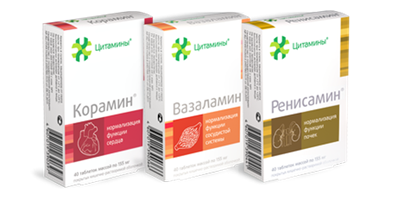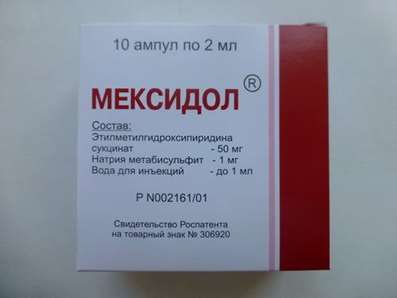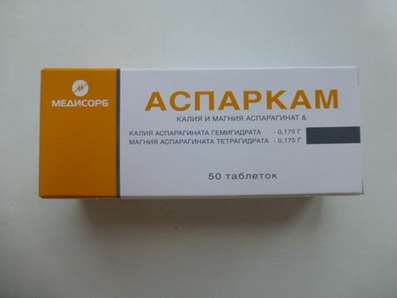Instruction for use: Articaine
I want this, give me price
Latin name: Articainum (genus. Articaini)
Chemical name
4-Methyl-3 - [[1-oxo-2- (propylamino) propyl] amino] -2-thiophenecarboxylic acid methyl ester (as hydrochloride)
Gross formula
C13H20N2O3S
Pharmacological group:
Local irritants
The nosological classification (ICD-10)
Z01.2 Dental Examination: Extirpation of the tooth; Anesthesia of mucous membranes; Stomatological intervention
Z100.0 * Anesthesiology and premedication: Abdominal surgery; Adenomectomy; Amputation; Angioplasty of the coronary arteries; Carotid artery angioplasty; Antiseptic treatment of skin in wounds; Antiseptic treatment of hands; Appendectomy; Atheroctomy; Balloon coronary angioplasty; Vaginal hysterectomy; Venous bypass; Interventions on the vagina and cervix; Interventions on the bladder; Interference in the oral cavity; Reconstructive-reconstructive operations; Hand hygiene of medical personnel; Gynecological Surgery; Gynecological interventions; Gynecological operations; Hypovolemic shock during surgery; Disinfection of purulent wounds; Disinfection of the edges of wounds; Diagnostic Interventions; Diagnostic procedures; Diathermocoagulation of the cervix; Long-term surgeries; Replacement of fistulous catheters; Infection in orthopedic surgical interventions; Artificial heart valve; Kistectomy; Short-term outpatient surgery; Short-term operations; Short-term surgical procedures; Cryotyreotomy; Blood loss during surgical interventions; Bleeding during surgery and in the postoperative period; Laser coagulation Laserocoagulation; Laser retinopathy of the retina; Laparoscopy; Laparoscopy in gynecology; Likvornaya fistula; Small gynecological operations; Small surgical interventions; Mastectomy and subsequent plastic surgery; Mediastinotomy; Microsurgical operations on the ear; Mukinging operations; Suturing; Minor surgery; Neurosurgical operation; Eclipse of the eyeball in ophthalmic surgery; Orchiectomy; Pancreatectomy; Pericardectomy; The rehabilitation period after surgical operations; Reconvalence after surgical intervention; Percutaneous transluminal coronary angioplasty; Pleural Thoracocentesis; Pneumonia postoperative and post traumatic; Preparing for surgical procedures; Preparing for a surgical operation; Preparation of the surgeon's arms before surgery; Preparation of the colon for surgical interventions; Postoperative aspiration pneumonia in neurosurgical and thoracic operations; Postoperative nausea; Postoperative hemorrhage; Postoperative granuloma; Postoperative shock; Early postoperative period; Myocardial revascularization; Resection of the apex of the tooth root; Resection of the stomach; Bowel resection; Resection of the uterus; Liver resection; Small bowel resection; Resection of a part of the stomach; Reocclusion of the operated vessel; Gluing of tissues during surgical interventions; Suture removal; Condition after eye surgery; Condition after surgery in the nasal cavity; Condition after gastrectomy; Condition after resection of the small intestine; Condition after tonsillectomy; Condition after removal of duodenum; Condition after phlebectomy; Vascular Surgery; Splenectomy; Sterilization of surgical instrument; Sterilization of surgical instruments; Sternotomy; Dental surgery; Dental intervention on periodontal tissues; Strumectomy; Tonsillectomy; Thoracic surgery; Total gastrectomy; Transdermal intravascular coronary angioplasty; Transurethral resection; Turbinectomy; Removal of a tooth; Cataract removal; Removing Cysts; Removal of tonsils; Removal of myoma; Removal of mobile milk teeth; Removal of polyps; Removal of a broken tooth; Removal of the uterus; Removal of seams; Urethrotomy; Fistula of the luminal ducts; Frontoetmoidogamotomy; Surgical infection; Surgical treatment of chronic ulcers of extremities; Surgery; Surgery in the anus; Surgery on the large intestine; Surgical practice; Surgical procedure; Surgical interventions; Surgical interventions on the digestive tract; Surgical interventions on the urinary tract; Surgical interventions on the urinary system; Surgical interventions on the genitourinary system; Surgical intervention on the heart; Surgical procedures; Surgical operations; Surgical operations on veins; Surgical intervention; Vascular Surgery; Surgical treatment of thromboses; Cholecystectomy; Partial resection of the stomach; Extraperitoneal hysterectomy; Percutaneous transluminal coronary angioplasty; Percutaneous transluminal angioplasty; Coronary artery bypass grafting; Extirpation of the tooth; Extirpation of infant teeth; Extirpation of pulp; Extracorporeal circulation; Extraction of the tooth; Extraction of teeth; Extraction of cataracts; Electrocoagulation; Endourological interventions; Episiotomy; Ethmoidotomy; Complications after tooth extraction
Z100.0 * Anesthesiology and premedication: Nasogastric intubation; Relaxation of skeletal musculature; Managed breathing during anesthesia; Anesthesia; Anesthesia in otorhinolaryngological practice; Anesthesia in dentistry; Arterial hypotension with spinal anesthesia; Ataralgesia; Basic anesthesia; Rapid anesthesia; Introduction to anesthesia; Introductory anesthesia; Inhalation anesthesia; Inhalational anesthesia for large and small surgical interventions; Induction and maintenance of general anesthesia; Intraligamentary anesthesia; Intubation of the trachea; Caudal anesthesia; Caudal blockade; Combined anesthesia; Short-term anesthesia; Short-term infiltration anesthesia in surgery; Short-term local anesthesia; Lumbar anesthesia; Local anesthesia; Local infiltration anesthesia; Local superficial anesthesia; Monocomponent anesthesia; Anesthetic; Non-anional anesthesia in operative delivery; Immediate anesthesia; General anesthesia; General anesthesia for short-term surgical interventions; General Anesthesia; Premedication Period; Surface anesthesia in ophthalmology; Maintaining anesthesia; Premedication; Conduction Anesthesia; Regional anesthesia; Mixed anesthesia; Spinal anesthesia; Spinal-cerebral anesthesia; Terminal anesthesia; Epidural anesthesia; IVL; Artificial Hibernation; Short-term muscle relaxation; Muscle relaxation; Muscle relaxation during mechanical ventilation; Miorelaxation in surgical interventions; Muscle relaxation at operations; Muscle relaxation in ventilating; Excitement before surgery; Cardioplegia; Preoperative period
Z46.3 Fitting and fitting the denture
CAS code
23964-58-1
Characteristics of the substance Articaine
Local anesthetic from the group of amides.
White or white with a creamy hue of crystalline powder. Soluble in water and alcohol.
Pharmacology
Pharmacological action - local anesthetic.
In tissues (in a slightly alkaline medium) it undergoes hydrolysis and releases the base, which possesses lipophilic properties and easily penetrates the membrane inside the nerve fiber. Ionized (due to a lower pH) and transformed into a cation. It interacts with receptors, inhibits the entry of sodium ions into the cell during the depolarization phase, and blocks the impulse along the nerve fiber.
With the / m introduction of Cmax achieved in 20-40 minutes. T1 / 2 - about 40 minutes. With infiltration anesthesia in the oral cavity has a high diffusion capacity. Biotransformatsya in the liver. It penetrates through the placental barrier, penetrates insignificantly through the BBB, is practically not excreted in breast milk. It is excreted by the kidneys (54-63% for 6 hours). The duration of anesthesia is 60 and 180 minutes with the addition of vasoconstrictors. In an acidic environment, the effect is reduced.
Application of the substance Articaine
Infiltration and conduction anesthesia, incl. at stomatologic operations: uncomplicated removal of one or several teeth, treatment of carious cavities of a tooth and grinding of teeth before prosthetics.
Contraindications
Hypersensitivity to articaine, other locally anesthetic LS group of amides, as well as to sulfites (especially in patients with bronchial asthma), anemia (including B12-deficiency anemia), paroxysmal tachycardia, ciliary tachyarrhythmia, severe sinus node conduction or conduction as expressed bradycardia, AV-blockade II-III degree), acute decompensated heart failure, severe arterial hypotension, angle-closure glaucoma, methemoglobinemia, hypoxia, children under 4 years of age (safety and efficacy the application is not defined).
Application in pregnancy and lactation
Does not affect the fetus (with the exception of a possible bradycardia) with any technique of application and dosage.
Update of information
Artikain penetrates the placental barrier. Due to the lack of clinical data, the decision to prescribe articaine by a dentist can only be made if the potential benefit of using it is justified by the potential risk to the fetus.
During lactation, there is no need to interrupt breastfeeding, because in breast milk there are no clinically significant concentrations of articaine, but for the sake of precaution, breastfeeding should be discontinued for 4 hours after the last dose of articaine.
Side effects of Articaine
From the nervous system and sensory organs: headache, dizziness, impaired consciousness (until its loss), muscle tremor and muscle twitching (up to generalized seizures), blurred vision, diplopia.
From the cardiovascular system and blood (hematopoiesis, hemostasis): lowering blood pressure, stopping the heart.
On the part of the intestine: nausea, vomiting.
On the part of the respiratory system: a violation of breathing (until life-threatening stop).
Allergic reactions: itching, hives, skin hyperemia, conjunctivitis, rhinitis, angioedema, anaphylactic shock.
Other: local reactions (swelling and inflammation at the injection site).
Interaction
The effect of articaine is enhanced and lengthened by vasoconstrictors.
Update of information
Local anesthetics increase the effect of drugs that depress the central nervous system. Narcotic analgesics strengthen the action of local anesthetics and increase the risk of respiratory depression.
When injecting articaine, patients who receive heparin or acetylsalicylic acid may develop bleeding at the injection site.
With the simultaneous use of articaine and muscle relaxants, the strength and lengthening of the action of muscle relaxants is possible.
Artikain displays antagonism with respect to the effect on the sclerotic musculature with anti-asthmaic drugs, especially when used in high doses, which requires an additional correction for the treatment of myasthenia gravis.
With the combined use of articaine with cholinesterase inhibitors, it is possible to slow the metabolism of articaine.
Overdose
Symptoms: dizziness, motor agitation, loss of consciousness, lowering blood pressure, tachycardia / bradycardia.
Treatment: at the appearance of the first signs of an overdose during the injection, it is necessary to stop the drug administration, give the patient a horizontal position, provide free airway patency, monitor heart rate and blood pressure. With shortness of breath, apnea - oxygen, endotracheal intubation, IVL (central analeptics are contraindicated); with convulsions - in / in the slow introduction of short-acting barbiturates with simultaneous inhalation of oxygen and control of hemodynamics; with severe circulatory disturbances and shock - intravenous infusion of electrolytes and plasma substitutes, HA, albumin; with vascular collapse and increasing bradycardia - intravenous injection of epinephrine 0.1 mg (hereinafter - IV drip under the control of heart rate and blood pressure). Oxygenotherapy and blood circulation control are necessary in all cases.
Precautions for the substance Articaine
Do not enter IV.
Care must be taken in patients with impaired respiratory and cardiac activity.
Care should be taken when driving vehicles and engaging in other potentially hazardous activities requiring increased attention and speed of psychomotor reactions.

 Cart
Cart





